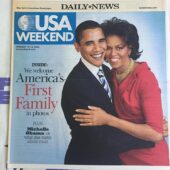Production Company: Konrad Films / Fox 2000 Pictures / Tree Line Films
Studio: 20th Century Fox
Cast: Joaquin Phoenix as Johnny Cash, Reese Witherspoon as June Carter, Ginnifer Goodwin as Vivian Cash, Robert Patrick as Ray Cash, Dallas Roberts as Sam Phillips, Dan John Miller as Luther Perkins, Larry Bagby as Marshall Grant, Shelby Lynne as Carrie Cash, Tyler Hilton as Elvis Presley, Waylon Malloy Payne as Jerry Lee Lewis, Shooter Jennings as Waylon Jennings, Sandra Ellis Lafferty as Maybelle Carter, Dan Beene as Ezra Carter, Clay Steakley as W.S. ‘Fluke’ Holland and Johnathan Rice as Roy Orbison
Crew: James Mangold (director and co-writer); Johnny Cash (based on his books The Man in Black and Cash: An Autobiography); Gill Dennis (co-writer); Alan C. Blomquist and John Carter Cash (executive producers); James Keach and Cathy Konrad (producers)
Synopsis:
“Locusts and honey … not since John The Baptist has there been a voice like that crying in the wilderness. … “
– U2’s Bono in the liner notes for The Essential Johnny Cash
In 1955, a tough, skinny guitar-slinger who called himself J.R. Cash walked into the soon-to-be-famous Sun Studios in Memphis. It was a moment that would have an indelible effect on American culture. With his driving freight-train chords, steel-eyed intensity and a voice as deep and black as night, Cash sang blistering songs of heartache and survival that were gutsy, full of real life and unlike anything heard before.
That day kicked off the electrifying early career of Johnny Cash. As he pioneered a fiercely original sound that blazed a trail for rock, country, punk, folk and rap stars to come, Cash began a rough-and-tumble journey of personal transformation. In the most volatile period of his life, he evolved from a self-destructive pop star into the iconic “Man in Black” – facing down his demons, fighting for the love that would raise him up, and learning how to walk the razor-thin line between destruction and redemption.
The story of the young Johnny Cash and his incendiary love affair with June Carter Cash, comes to life in WALK THE LINE, directed by James Mangold (Heavy, Cop Land, Girl Interrupted, Identity) from a script by Mangold and Gill Dennis (Riders of the Purple Sage), based on Cash’s books Man in Black and Cash The Autobiography. The film is produced by Cathy Konrad (Citizen Ruth, Beautiful Girls, Scream, Cop Land, Girl Interrupted, Identity) and James Keach (The Stars Fell on Henrietta), and was developed for seven years with the close cooperation of Johnny Cash and June Carter Cash before their deaths in 2003.
Other Info:
PRODUCTION NOTES
WALK THE LINE stars Academy Award® and Golden Globe nominee Joaquin Phoenix as Johnny Cash and Golden Globe nominee Reese Witherspoon as June Carter. Phoenix and Witherspoon sing every note of their roles themselves in live performances that capture the spirit of the music that drove Johnny and June’s relationship.
The story begins in Depression-era Arkansas, as the film traces the origins of Cash’s sound back to his beginnings as a sharecropper’s son; moves through his wild tours with rock and roll pioneers Elvis Presley, Carl Perkins, Roy Orbison, Jerry Lee Lewis and Waylon Jennings; and culminates in his unforgettable 1968 concert in Folsom Prison. He became the hottest artist of the day, outselling even the Beatles. WALK THE LINE chronicles the birth of a new kind of American artist who had to move past raw anger, the ravages of addiction, and the temptations of stardom to discover the voice that would make him a hero to generations. Those early years encompass the themes that ran through Cash’s music and minimalist style: death, love, treachery, sin, hope and faith.
Says Writer-Director James Mangold of Cash: “The more I learned from John about the early years in his life and career, the more I saw an opportunity to make a movie about a time when making music was about making music, and not about money or videos. John’s story isn’t the tale of some prodigy or raw ambition; he started late, taught himself to play guitar, and got little encouragement. Nobody was beating a path to his door when he moved to Memphis. But John was smart enough to plant himself at Sun (Records), ground zero of a musical revolution. Surrounded by outrageoous talent, John grew into something none of the others there would ever be – a timeless storyteller and a searing voice of the shadows. His songs were so unique, so personal, and so raw.”
Adds Mangold: “Of course, the other opportunity was to make a movie about one of the great love stories. There was something magical about the idea that for a decade, the only place John and June were allowed to be alone together was onstage in front of 10,000 people.”
The film’s supporting cast includes Grammy® Award-winning country and blues artist Shelby Lynne, who makes her feature debut as Johnny’s mother, Carrie Cash; rock and blues artist Waylon Malloy Payne who plays Jerry Lee Lewis; country-rock artist Shooter Jennings, who portrays his real life father, Waylon Jennings; alternative rock and folk artist Johnathan Rice as Roy Orbison; and rising singer/songwriter Tyler Hilton as Elvis Presley.
The cast also includes Robert Patrick (Terminator 2:Judgment Day, Ladder 49) as Cash’s father, Ray Cash; Ginnifer Goodwin (Mona Lisa Smile) as Cash’s first wife, Vivian; Dan John Miller as Texas Two guitarist Luther Perkins and Larry Bagby as bassist Marshall Grant; Dallas Roberts as Sun Records founder Sam Phillips; Dan Beene and Sandra Ellis Lafferty as country icons Ezra and Maybelle Carter; and Hailey Anne Nelson as a very young Roseanne Cash.
At the film’s core is the passionate and revved-up music that knocked the complacency out of popular culture in the 1950s, which Mangold felt could only be captured in its most emotional and authentic form by having the principal cast perform many of the film’s songs live. “The early fifties were the height of the smooth post war sound, Doris Day and ‘easy listening,'” says Mangold. “Musak was invented the year John released his first singles; even country music of the early fifties was highly produced, the edges smoothed for greater ‘appeal’. One of the things I wanted the music in the film to convey was the startling roughness, the good humor, the cockiness, the urgency, heat and fire that shook people when these boys first played to crowds.”
To help shape this effort, Mangold enlisted Grammy-winning and Oscar-nominated music producer T Bone Burnett (Cold Mountain, O Brother,Where Art Thou?), who also composed the score for WALK THE LINE. “T Bone was the perfect choice, not only because of his film experience and his connection to roots music,” says Mangold, “but because of his experience producing first albums by emerging bands, such as Counting Crows and the Wallflowers. Our cast was a very new band.”
THE BEGINNING:
MEETING JOHNNY CASH
“‘I Walk the Line’ played all summer on the radio, and it was different than anything else you had ever heard. The record sounded like a voice from the middle of the earth. . . It was profound, and so was the tone of it, every line; deep and rich, awesome and mysterious all at once . . . Truly he is what the land and country is all about, the heart and soul of it personified.”
– Bob Dylan in Rolling Stone
When the young J.R. Cash emerged from the Air Force into Memphis, Tennessee in the mid-1950s, there were no such things as rock stars. All Cash wanted was for people to hear his songs and their stories of hard-luck characters seeking faith and redemption. Young, brash and on fire, Cash would become part of the birth of rock and roll. He would influence many heart-on-the-line folk singers, truth-talking country artists and riled-up punk rockers. The rough-gravel voice, the percussive simplicity of his songs, the way he aimed his guitar at the audience like a rifle sight, and the emphasis he placed on hard work and human worth made him idolized by the Beatles, Bob Dylan, Joe Strummer, U2 and Coldplay.
Yet few people know the full story of the young Johnny Cash – how he fought for his genre-busting music, how he nearly flamed-out before he reached greatness, and how he found a love that would change his life. Writer-Director Mangold, like so many people from all walks of life, had always admired Cash, and had long been fascinated by his seminal role in the history of American music.
In the 1990s, Mangold was in the middle of production on Cop Land, a modern Western and a richly complex tale of redemption starring Sylvester Stallone, Ray Liotta, Harvey Keitel and Robert De Niro, when Konrad, a Producer on Cop Land, asked Mangold what he wanted to do next. Mangold told Konrad he had been gripped by the idea of making a movie about Cash. Konrad found that the rights to Cash’s life story were held by the Cash’s close friend, actor-filmmaker James Keach (whose wife Jane Seymour had starred with Cash on television’s Dr. Quinn: Medicine Woman). Mangold and Konrad approached Keach, and together the three agreed to develop the project, with Gill Dennis and Mangold writing together.
“I remember vividly the excitement Jim and I had when our very first meeting with John and June was set up,” recalls Konrad. “We flew down to Hendersonville, Tennessee and they invited us over for breakfast. We were waiting in the lobby of a Holiday Inn and suddenly I heard this booming voice. I turned around to hear: ‘Hi, I’m Johnny Cash.’ And there he was, in his boots and jeans. He picked us up in his diesel Mercedes and we went to their house for breakfast. It was a very powerful experience. They said a beautiful grace before breakfast and they sang a song together. It was a day that Jim and I hold very dear.”
Over the ensuing years, the filmmakers spent long hours with John and June, listening to stories about the early days of rock and roll, their tumultuous lives, and their long-percolating romance. Konrad continues: “As we got to know John better, Jim never shied away from asking him provocative questions that many people might have been afraid to ask. And John really trusted him. Jim inspired a real confidence in John in how Jim was going to tell this story.”
From the beginning, Mangold saw a chance to tell a quintessentially American tale. Instead of cramming Cash’s 70-plus years into a two-hour film, Mangold decided to tell the most dramatic, transformational and unknown part of Cash’s story – the years spanning his impoverished boyhood, his rocketing rise to stardom, his near fall from grace, and his remaking himself as a legend.
“This is a story very few people know,” says Mangold. “Young John and his peers were pioneers struggling to find their way. What does it mean to be a rock star when no one has lived that life before you? What do you do with all this attention? How do you handle the pressure, the money, the fans, the demands? There were no roadies, tour buses, five star hotels, air conditioning or cell phones to stay connected to your family. People like John, Elvis and Jerry Lee were just driving their gear every night from one sweltering gig to another. No one knows how hard these tours were. I thought was a world I hadn’t seen on screen before.”
Mangold hoped to capture some of the electrifying energy that surrounded those early days of rock music. “There will only ever be one birth of rock, one moment where a musical idea synthesizes like that,” says Mangold. “That will never happen again. I saw this as an opportunity to show how this music which changed the world was created in such a modest place by kids. It was a revolution in a tiny room in Memphis.”
As Mangold grew closer to John and June, he was moved by their love for one another. The filmmakers came to understand how their romance was integral to the evolution and emotions of their music. “The story of John and June as a couple was so beautiful and is such a uniquely American love story that you couldn’t have written it any better than the real thing,” he says. “For ten years their intimacy existed almost only on stage. Yet there was something deeply romantic about that because on stage, everything melts away and you’re just alive and connected in the most primal way with the other person singing with you. It took them a long time to be able to take that on-stage connection and pull it into their off-stage lives.”
Adds Konrad: “It’s easy to get cynical about love these days, so Jim and I were touched being in the presence of two people who supported each other through every thing that can happen in a life. John and June were magical together. You realize their foundation was love, which allowed them to survive the hardest times and let them give so much to the world.”
As for the film’s title, Mangold sees the concept of “walking the line” as central to Cash’s own struggle. “I think the song ‘Walk the Line’ means so much to so many different people because it’s about the effort we all have to make in order stay on the path. The song doesn’t deny evil or pretend the singer is above temptation. John simply sings his personal truth, the act of being a good man is a job you have to work at every day,” he says.
“He was singing,” Mangold continues, “about his struggle to contend with all these tidal forces coming together in his life, issues he hadn’t faced from childhood: addiction, falling in love with June, and family responsibilities.”
As Mangold wrote the screenplay with Gill Dennis, they referred back to Cash’s two autobiographies: the 1986 Man In Black and 1997’s Cash The Autobiography – both of which looked at the highs and lows of his life with unsparing candor and wit. Delving deeper, Mangold and Dennis used John and June’s songs as a guide. Mangold contacted dealers in vintage records stores around the world, unearthing rare, early Cash and Carter tracks that helped illuminate his life story; Cash’s lyrics were a window into his thoughts and feelings during this period. “It was fascinating to see how the songs John wrote during that period had so much to do with what he was going through at the time. They tell an intense personal story, sometimes indirectly, but still quite revealing. While John never did hard time, he wrote so many songs about prison because he identified with convicts. He felt like he had made huge mistakes he could never be forgiven for; he was imprisoned for decades by his own heart.” says Mangold.
Though June Carter Cash died in May of 2003 and Johnny Cash followed her just five months later, Mangold and Konrad were gratified that the couple were able to read several drafts of the script and provide feedback. “The experience of getting to know these two people who were so giving, kind and trusting, made us want to do right by them,” says Konrad. “We felt fortunate that they at least had a chance to read the script, and that they were satisfied with how we had told their story.”
Sums up producer James Keach: “When Johnny Cash became a rock and roll star, he went into the ring of fire, as June would say. Ultimately, his story is a love story; it’s about redemption, it’s about the history of rock and roll, and it’s a spiritual journey of how a man found himself.”
CastING JOAQUIN PHOENIX:
BECOMING JOHNNY CASH
“He was willing and able to be the champion of people who didn’t have one. And I think the power of his performance came from the tension between this man who was deeply spiritual and also a real wild man. I can see how rappers would love that ‘I shot a man in Reno’ attitude. But to me, he doesn’t represent danger, he represents integrity.”
– Kris Kristofferson in Rolling Stone
Cathy Konrad saw a photograph of Joaquin Phoenix that brought to mind the coiled energy and underlying emotion of the young Johnny Cash in the 1950s and 60s. The resemblance transcended the physical. “There was just something in Joaquin’s eyes,” says James Mangold, who agreed that Phoenix was perfect choice to play the young J.R. Cash. “He just had that same sense of searching for something. Joaquin has the honesty that is so much a part of who John was.”
Following his instincts, Mangold cast Phoenix without further meetings. It turned out that Johnny Cash was also a fan of Phoenix’s performance as Emperor Commodus in Gladiator, for which Phoenix received an Oscar® nomination.
In pursuing the role, Phoenix went with his gut. “When I heard that James Mangold was directing a movie about the life of Johnny Cash, I wanted to do it without even reading the script,” the actor recalls. “I just had a really good feeling about it, and I liked the idea of playing such a complex man who led an incredibly rich life.”
Phoenix didn’t know a lot about Johnny Cash’s early years as a rock and roll pioneer, and the actor found the story to be very revealing. “Many people only know Johnny Cash as the ‘Man in Black,'” he says. “It was exciting for me to learn about his early years and his breakthrough at Sun Records, just as rock and roll was taking off.”
Phoenix was drawn to Cash’s deeply human contradictions. He based much of his portrait on June Carter’s observation that Johnny had two distinct personalities: the man she called John and an alter-ego she named Cash. Cash was the wild, obstinate, ego-driven man who was drawn to the dark side of human life; John was the honest, vulnerable and deeply searching man within.
From the minute he got the part, Phoenix began carrying a guitar. He immersed himself in Johnny Cash’s life and music, reading his autobiographies, watching documentary footage of his earliest recorded performances, and listening to every Cash recording. Though Johnny Cash passed away before Phoenix had a chance to work directly with him, the actor was pleased that Cash had approved of the casting. “I was excited by how heavily involved Jim Mangold had been with John in writing the script and how Jim was determined to get it right,” says Phoenix. “That really meant a lot. It took some of the pressure off, because John was someone whose integrity you could always sense. People appreciated John’s genuineness.”
Phoenix knew if was going to get inside the soul of Johnny Cash, he would first have to get inside the soul of the musician. Cash’s stage mannerisms and guitar style had to become an organic part of Phoenix’s performance. Recalls Mangold: “One of the things John told me about whoever was going to play him was, ‘I just hope they know how to hold a guitar. You don’t hold it like it’s a baby and you’re frightened it’s going to break. You grab it by the neck.’ So I knew that Joaquin had to approach his guitar like it was something he had lived with all his life – and that’s what he did.”
“Johnny moved on stage in very specific ways, he had a specific guitar strum that contributed to the energy of his performances,” observes Phoenix. “I had to familiarize myself with the guitar because it was almost like a physical extension of John. It was his best friend, and I think he felt vulnerable whenever he didn’t have it in his hands.”
Phoenix didn’t want to imitate Cash’s singing voice; instead, Phoenix’s vocals had to come from somewhere deep inside. “Jim wanted a raw approach, to capture the intimacy that comes from someone writing a song and then singing it in that moment,” says Phoenix. “You can’t lip-sync that that kind of scene because it’s so integral to the character. Music is always part of how John communicates what he’s feeling and seeing – and it couldn’t be faked.”
A sense of spontaneity was a key to Phoenix’s performance. “I learned there was always something unpredictable about John’s early shows. You never knew when he was going to just stop in the middle of a song and start chatting up the audience, and I thought it was important to try to capture that spontaneity,” Phoenix says. “The film takes place in a time before people put on polished live acts. There weren’t light shows or special effects. It was just a man on stage, baring his soul. And for me, that simple honesty and intimacy is what John was about.”
Phoenix then had to switch gears as he faced some of Cash’s most turbulent and agonizing moments, including Cash’s attempts to shed his nearly ruinous addiction to amphetamines. “Johnny started taking them in the late 50s almost for practical reasons,” notes the actor. “These artists had such an intense touring schedule; they were own roadies, techs, and bus-drivers. Johnny took amphetamines mostly just to keep going – and he also said that it gave him a kind of confidence on stage during this time. But it became excessive, and he went through a rough period of addiction. It was also during this time that he was falling in love with June.”
For Phoenix, the love story between Johnny Cash and June Carter was special. “She was a woman who wouldn’t take any sh*t – and that was really important for John,” he comments. “He needed that kind of force in his life. He’d always loved her music. But when he met her, he saw that she was completely his opposite in many ways – there was something so grounded and self-assured about her that it taught him a lot about how to survive.”
Phoenix and Reese Witherspoon were thrown into a whirlwind of emotion throughout WALK THE LINE. “We went through a lot of difficult things together,” says Phoenix, “because we knew we had to take on both the good and bad of these characters.”
“But in the end,” Phoenix summarizes, “I couldn’t have found John without the way Reese found June.”
CastING REESE WITHERSPOON:
BECOMING JUNE CARTER CASH
“Her great passion and mission was lifting up my dad. She was his dearest companion, musical partner, soulmate and best friend.”
– Roseanne Cash in a tribute to June Carter Cash
Casting Reese Witherspoon as June Carter Cash in WALK THE LINE was just as instantaneous as choosing Joaquin Phoenix to play Johnny Cash. “Reese was simply our first choice,” states Mangold. “I had known Reese for awhile and was always struck by how very much her energy was like June’s. I thought this role would offer her a real opportunity to show both sides of herself. There’s one persona of Reese’s that we see in her comedies: a sharp, sassy, beautiful, super-confident young woman. But Reese is also a devoted mother of two, who is wise and connected to the world around her. Similarly, June was a comedic figure on stage – daffy and sassy and funny – but when the curtain came down she was serious about being a breadwinner and a good mother to her children.”
And then there was the matter of chemistry. Says Cathy Konrad: “We could see from the start that Reese and Joaquin would be great together. June had a wonderful energy and life to her that John fed off of, and Reese radiates that beside Joaquin.”
“Playing June was a very emotional experience for me,” Witherspoon comments. “I felt right away that it was going to be a huge responsibility to play such a wonderful woman whose life meant so much to people. I mean, June Carter’s writings and books have inspired me a lot, as a mother, as an entertainer and as a wife. So it was challenging and humbling and harrowing – all at the same time – to take on this role.”
Witherspoon began her preparations by trying to get inside June Carter’s world. “Fortunately, Jim really got to know June and John as people, and since Joaquin and I were never able to meet them, we learned a lot through Jim and his stories,” explains Witherspoon. “Jim’s passion for who they were and what they stood for was inspiring.”
Mangold spoke at length with Witherspoon about how June changed Johnny’s path after he hit rock bottom. “June was no dummy. She understood that darkness would always be a part of John’s life,” Mangold observes. “She also knew that the shadows John was exploring were vital to his art. But she wasn’t going to abide by cruelty or irresponsibility, especially when she knew who he really was inside. She drew her own line with John that made it clear what kind of man she expected him to be if he was going to be with her.”
Like Phoenix, Witherspoon found the heart of June Carter not only in her personality but in her music, especially her musical relationship with Johnny Cash. Suddenly, the actress was immersed in a brave new world of live performance she’d never imagined. “I really had no idea when I signed on to this role that I would be spending months taking autoharp lessons, singing lessons, working with professional musicians, and then recording tracks every day,” she notes. “In many ways, it was completely overwhelming. But it was also a lot of fun and an incredible educational experience. I got a very compressed taste of all the incredible things June Carter learned throughout her life.”
As she developed new skills as a singer and performer, Witherspoon developed a sense of how June Carter’s feelings for Johnny Cash evolved during those early years. “I think that from the minute June gets caught in John’s guitar string, there’s a profound connection between them,” observes Witherspoon. “But they were both married to other people, so they kept that connection and put it into their music. I think it’s really interesting how their romance developed, because it took many years for them to be fully ready to commit to each other. Yet once they came together, they were never apart.”
She continues: “To me, their marriage became something really beautiful and amazing. There’s something special about finding someone who is both your soul mate and your best friend. In part, WALK THE LINE appealed to me so much because I really believe in those ideals, and the story of John and June is a chance to celebrate it.”
Witherspoon was especially inspired by Joaquin Phoenix’s emotionally raw performance. “It was wonderful to work opposite Joaquin because he is so great at creating authentic drama,” she summarizes. “He seemed to get to something essential about the soul and spirit of Johnny Cash in everything he did.”
GOING LIVE:
PERFORMING AS JOHNNY AND JUNE CARTER CASH
I did my first tour ever with Johnny Cash — way back in 1956. It was me, him and Carl Perkins, a thirty-day tour all the way through Canada, and there weren’t any paved highways or anything, nothing but gravel roads. I remember what a great showman Johnny was. The way he sang was completely different, and he had a whole different style that he created himself.
– Jerry Lee Lewis in Rolling Stone
James Mangold knew his biggest challenge was to bring to life Johnny Cash’s music and live-wire performances. Mangold wanted audiences to experience the performances’ visceral excitement and emotions. He thought syncing would be too remote and mechanical, the very antithesis of Johnny Cash. But how could any pair of actors, no matter how talented, capture the distinctive voices of Cash and Carter without siding into exaggerated imitation?
Mangold felt that Joaquin Phoenix and Reese Witherspoon could capture what he wanted by focusing on the characters’ and music’s emotional veracity.
The director explains: “I focused on music as an expression of character – the idea that a song is coming from what the singer is feeling in life and an inability to get to that emotion any other way. And how do you that? I felt that in order to see John creating his songs, you couldn’t just push a button on a tape recorder to make it happen. I wanted to see ‘Folsom Prison’ born in the barracks of a German military base. I wanted to see John’s audition for Sam Phillips, in which he was standing there like he was naked, warts and all – and inexperienced guy throwing himself out there.”
“It was a huge gamble,” admits Cathy Konrad. “Yet it was something Jim and I were emphatic about from the minute we started talking about the film. We wanted to convey an experience that was possible only if the actors sang their roles. We were so committed to the idea that I honestly think that we talked ourselves into believing it would work without even knowing how we were going to do it, at first! A big influence on us was the film Coal Miner’s Daughter– especially because we both remembered how phenomenal Sissy Spacek was in that film, performing as Loretta Lynn.”
Still, the challenge was daunting. Says Reese Witherspoon: “The live performances in this movie were the hardest thing I’ve ever done. You can’t imagine how nerve-wracking it is to be on stage in front of an audience and have to sing when you’ve never professionally done so. But it was also a lot of fun learning to adapt and dive into something so completely outside the comfort zone.”
Mangold helped set Phoenix and Witherspoon at ease by making it clear that polished perfection was not what he was after. Instead, he wanted something more raw and energetic, which is what Johnny and June saw as their strengths. “Neither John nor June would sit around bragging about their vocal dexterity,” says Mangold. “They’ve done brilliant vocal work but you don’t necessarily want a trained signer to play them. I always felt that what you need to play them is most of all authenticity, and Joaquin and Reese were committed to that.”
Mangold brought in T Bone Burnett, the lauded roots-rock producer, writer and musician — and the artist behind the award-winning Cold Mountain and O Brother Where Are Thou? soundtracks – to work on the film’s soundtrack and score. Burnett could not resist the opportunity of trying to do justice to one of his musical heroes. “Johnny Cash has been so important to me all my life,” says Burnett. “He’s up there with Mark Twain and Walt Whitman as a towering American cultural figure – but at the same time he was also wild and part of the rock and roll culture.”
The Johnny Cash of WALK THE LINE is fueled with the fire of youth and anger. “In a sense, this is the punk Johnny Cash,” notes Burnett. “What set him apart that he was always going off on his own, doing something unlike anyone else. He was just a completely unique character.”
To immerse the actors in Johnny Cash’s world of constant touring, Mangold, Konrad and Burnett created a kind of “rock and roll boot camp,” which included music lessons, individual practice time, band practice, and practice recording sessions. This last idea was invaluable. “It was a smart thing to do because both Joaquin and Reese are extremely intuitive and quick, so by hearing themselves over and over they were able to react to that and get a chance to really evolve. The learning curve was amazing to watch,” says Mangold.
During this period, Burnett worked with Joaquin Phoenix on 25 early Johnny Cash songs. “We spent a lot of time practicing, working on instruments, working on tone, and refining everything,” recalls Burnett. “Joaquin would come in and record and listen to his voice and keep adjusting it. He suddenly found another octave down in his chest that he didn’t even know he had when he began. He also turned into a very good guitar player. So much of Cash’s heartbeat is in the rhythm of the way he plays and Joaquin found that.”
Burnett was equally impressed with Reese Witherspoon’s growth as a musical performer. “Reese comes from Nashville so a Southern dialect came naturally to her,” he observes. “But at first, she was reticent about singing. Then one day, Reese and I sat down in my back yard. I took out a guitar and she started singing ‘Wildwood Flower’, and she really did it. She wasn’t trying to sing, and that was perfect. It was an important moment because she was singing freely. It was like she was possessed by June Carter. It was beautiful how she made her seem so real.”
Burnett wanted to score the film in addition to overseeing the music. “I thought scoring the film, as well as overseeing the soundtrack, would make it all more of a unified musical piece,” he explains. “Johnny Cash’s recordings were rough and raw, and it wouldn’t work to hire a Hollywood composer to write a score that would clash with how real we wanted to make the music.” Burnett took three distinct melodies from Cash’s songs and forged several variations on those themes to create the film’s original, guitar-based score.
When it came time to record the actors’ live performances, Burnett’s first move was to prohibit the use of digital effects. “To put digital reverb on a Johnny Cash song would be like putting spacesuits on the Texas Two,” he says. “We wanted it to really feel like the sound was of the period.”
He also insisted on using vintage instrumentation. He explains: “Guitars in those days were made with materials that were basically what the Russians used for rocket fuel. Guitars made of this material had a very thin finish, which gave them a sound different from what we’re used to today. We had to get guitars from that period, as well as microphones. We also need to record onto tape and use all the old stuff that would have been in a recording studio in those days.”
The film’s live musical performances had a galvanizing effect on the set. The actors mingled with the musicians, trading professional secrets. Recalls Mangold: “The actors who were not musicians by trade were becoming musicians and the musicians were becoming actors – and each of them had the advantage of being supported by the other. There was a wonderful heat of creation going on, and that became a part of what happens on screen.”
THE SUPPORTING CAST:
FAMILY, LOVES AND ROCK AND ROLL LEGENDS
“How well I have learned that there is no fence to sit on between heaven and hell. There is a deep, wide gulf, a chasm, and in that chasm is no place for any man.”
– Johnny Cash
Once Joaquin Phoenix and Reese Witherspoon were cast, the filmmakers turned their attention to the supporting characters, including Johnny’s first wife, his band-mates, and the soon-to-be rock and roll icons Johnny joined on tour.
Rock and country artist Shelby Lynne makes her feature film debut as John’s beloved mother, Carrie Cash; and Robert Patrick (Terminator 2: Judgment Day) takes on the role of Ray Cash, whose emotionally distraught relationship with John brings him to a crossroads. (Patrick recently played Vernon Presley in the television mini-series Elvis.)
Shelby Lynne grew up admiring Johnny Cash and she was thrilled to be a part of telling his story. She wrote a song called “Johnny Met June,” on the day Johnny Cash died, and it appears on her latest album, Suit Yourself. “I was a fan all my life not just of the music but of Johnny Cash as a figure who stood very strong,” she says. “He’s someone who had his troubles in his life but he was always inspirational.”
In playing Carrie Cash, Lynne developed a deep respect for the mother trying to raise her kids under the burdens of deep poverty and the accidental death of one of her sons. As if to balance out her husband’s toughness, Carrie brought a devout faith and unconditional love to the family that kept them together. “I saw Carrie as providing a comforting place that John could always turn to,” says Lynne.
Lynne especially enjoyed working so closely with Robert Patrick, whose skills in bringing Ray to life as an anguished father brought intense emotion to family scenes. “I was so glad to have this chance to work with Robert,” she says. “I’ve been amazed by how he managed to bring such sympathy and sincerity to his character. And Joaquin has been brilliant – he’s so energetic and real. He really loves this character.”
Another important influence on Johnny Cash’s early life was his first wife, Vivian Liberto, who became the devoted mother of his children Roseanne, Kathleen, Cindy and Tara. They were married in 1954, before Johnny had recorded a single song, but their lives were to change once he became a star. Playing Vivian is Ginnifer Goodwin, who appeared in Mike Newell’s Mona Lisa Smile. The actress felt great sympathy for her character.
Says Goodwin: “I believe under other circumstances, their relationship would have worked. But this was a tumultuous period. She was trying to raise babies at home by herself, trying to be the great homemaker, while he was always out and about, dedicating himself to his career. I think it’s very hard for a wife when a spouse puts all his time into work. Vivian started to see Johnny’s talent as something that was taking him away from their marriage. I read somewhere that she cried every night that Johnny Cash was on tour.”
Goodwin found few published accounts of Vivian’s life and marriage to Johnny Cash. “She was a very private and protective person,” notes Goodwin. “We can surmise that she was a romantic and that she found herself growing lonely in her marriage. In the only interview I could find with Vivian, she talked about John’s addiction, and that she was so naïve: she knew something was wrong with him, but she had no idea what it was. And when she found out that it was pills, she still thought he could just stop taking them and everything would be fine.”
But in reality, their marriage was irreparably damaged. For Goodwin, the scenes in which Vivian and John’s partnership dissolves were particularly heartbreaking. “Every time I watched Joaquin and Reese on stage, I became upset because I identified with how Vivian lived for her love with this man,” says the actress. “And to see him pulled away from her was very hard. But I was also impressed with how strong she must have been to raise these beautiful daughters by herself.”
In casting the rest of the film, Mangold and Konrad focused on finding world-class musicians who could pay homage to the kinetic energy and bursting talent of such early rock pioneers as Elvis Presley, Roy Orbison and Jerry Lee Lewis. The filmmakers’ goal was to create a palpable realism and passion for the music. Says Konrad: “Once we had Joaquin and Reese, we had to find the right people to support them. And we decided we’d much rather have great musicians than name actors. This resulted in some of the most enjoyable casting calls I’ve ever attended, where we saw people with instruments lined up around the block. There were so many people who loved John and his music and they all came out for that reason.”
The filmmakers gave themselves some leeway in casting the young Elvis Presley, Jerry Lee Lewis and Roy Orbison. “We felt like we had some creative license because no one saw Elvis when he was twenty. So we were looking for people who could get to that essence of the performers, rather than an exact physical replica,” notes Konrad. “I’ll never forget when Tyler Hilton came in to audition at a general casting call. He sat down with his guitar and there was just that ‘Elvis sparkle’ in his eye. He was so natural, and I remember T Bone Burnett passing a note that said simply said ELVIS. We all agreed.”
Hilton, a 21 year-old recording artist who plays a musician on the WB series One Tree Hill, was taken aback when offered the role of Elvis. “I thought to myself, what am I getting myself into? But I was really honored because I don’t know of any other movies where the really young Elvis is a character.”
The Elvis depicted in WALK THE LINE isn’t yet a huge star; he is an emerging singer like so many others trying to break out in the brand new rock and roll scene. “The challenge of playing Elvis is that he’s already been impersonated in every language on the planet,” Hilton notes. “So I went back to the earliest tapes of him speaking, to see what he was really like. He was much more Southern then, more hillbilly. He was very polite and awkward. He wasn’t smooth with his moves yet, and when it came to the music, it was rock and roll just starting to let loose. That was a really exciting thing to try to capture.”
Another of early rock’s most eccentric characters plays a major role in WALK THE LINE: notorious wild man, Jerry Lee Lewis, AKA “the Killer,” played by 31 year-old Texas rock and country artist Waylon Payne. The son of Grammy-winning singer Sammi Smith and Willie Nelson’s guitar player Jody Payne – and godson to Waylon Jennings – Payne grew up in the music business and knows first-hand how crazy life on the road can get. He also had the privilege of knowing Johnny Cash.
“You’ve heard Johnny’s records? You’ve seen him on television?” Payne asks rhetorically. Well that’s John Cash. He was exactly as he presented himself. He was a good, kind, God-fearing, gentle, graceful and humble man who was a pleasure to know.”
While Payne had seen long-time family friend Willie Nelson perform with Jerry Lee Lewis, he did not know Lewis personally, so he relied on research and gut instinct to bring the character to life on-screen. “I wanted to make Jerry Lee seem like a real person,” he says. “I based the portrayal mostly on books about him and old footage that we found in Memphis. From what I’ve heard, he was a very tortured soul, but he was also a hellion and on the road, I’m sure he would have been John’s scandalous partner in crime.”
Another young man steeped in musical history plays the country legend Waylon Jennings – his son, Shooter Jennings, who is a rising recording artist in his own right. “The idea for Shooter Jennings to play his father was something that intrigued us, but we were cautious,” says Konrad. “Was it the right thing to do? And then before we could answer that question, he approached us, so that broke the ice.” Jennings had very little need for research. “I saw John a lot in my life with my father, so I know how they interacted,” he says. “It was easy to imitate my father, especially when I had a guitar in my hand. It was definitely a little strange, though. They converted me with movie magic into a 19 year-old Waylon, and when I looked in the mirror, it definitely flipped me out.”
Jennings has vivid memories of Johnny Cash. “There were a couple times in my life when I was young when he gave me advice. He was very introspective and very spiritual,” he recalls. “He also had a great intelligence and was very strong as a person. He once told me that if there were only two pieces of literature you read in your life they should be the Book of Corinthians and the Gettysburg Address.”
Waylon Jennings and Johnny Cash became lifelong friends, and when both men were on the skids in 1968, they shared an apartment, a time depicted in WALK THE LINE. “My dad used to tell me these stories about it,” says Shooter. “They were both in a lull in their careers and they were both on drugs, but they were both lying to each other about it and my dad told me about how they were always trying to hide from one another. But you know, John and Dad really had a great relationship. They went through so many things together as friends, as artists and as music lovers. In this film, you see how their friendship endured through so much.”
Having known Johnny Cash so intimately, Shooter Jennings was especially awed by Joaquin Phoenix’s portrait. “Joaquin has that same mixture of immense strength and vulnerability that makes you love him instantly and also fear him, just like Johnny did,” he observes. “He even sounds like him. He found something in Johnny Cash that no other actor could.”
THE FILM’S DESIGN:
LIFE ON THE ROAD WITH JOHNNY CASH
“You’ve got a song you’re singing from your gut, you want that audience to feel it in their gut. And you’ve got to make them think that you’re one of them sitting out there with them too.”
– Johnny Cash
The filmmakers recreated the many different worlds of Johnny Cash’s early years – from his hard-scrabble upbringing on an Arkansas farm, to his discovery of Sun Studios in Memphis, to his days on the stage at Nashville’s Grand Ole Opry, and to his now-classic concert behind the gates of California’s Folsom Prison. The design captures the primal excitement of rock and roll’s emergence into one of America’s most relevant and popular art-forms. To make it all happen, James Mangold compiled a creative team that includes Director of Photography Phedon Papamichael, Production Designer David J. Bomba and Costume Designer Arianne Phillips.
Papamichael won acclaim capturing the comic and poignant travels of two aging men on a Napa Valley road trip in Alexander Payne’s Sideways. For WALK THE LINE, Mangold wanted Papamichael to create a swirling, roaming, you-are-there concert-style camerawork that would bring moviegoers right on stage with the performers – at the same time staying true to the era.
Mangold and Papamichael began talking about the film years ago, while they were shooting Identity and Mangold was still trying to get WALK THE LINE – his dream project – off the ground. One day, Johnny Cash even showed up on the set of Identity, recalls the cinematographer. “It was great because in that moment you could see how supportive he was of WALK THE LINE. He was really behind it,” Papamichael says.
To create an intimate portrait of the young Johnny Cash, Papamichael watched footage of his vintage performances. “One thing I noticed right away is that his performances didn’t have a lot of glitter and flash – they were very basic and rough with very primitive stage lighting,” the cinematographer says. “I wanted to keep some of that sensibility. I didn’t want to give the film a glamorous biopic look. My biggest concern visually was keeping it as real and pure as possible.”
Papamichael shot the film in Super 35, allowing him to do a lot of hand-held and Steadicam work. He also experimented with vintage lenses. “Lenses today are very much improved in quality,” he explains, “but using older lenses that aren’t coated like today’s lenses are, can give the image authenticity.”
When it came to shooting the film’s many live performances, Papamichael eschewed conventional approaches. “The traditional way of shooting these kinds of scenes is going for close-ups from the audience’s point of view,” he notes. “But we put the cameras on stage with the performers, so it was very intimate and from their point of view. We used mostly hand-held cameras and worked very spontaneously. I told the camera operators to just go for it, and it was great to give them that freedom to really find a groove with the performers. It also let Joaquin be as free he wanted to be in his movements. Doing it that way, we found a lot of great angles and shots in the moment.”
Papamichael was impressed by the actors. “It was very interesting to me how Reese and Joaquin approached their roles in two very different ways,” he says. “She was disciplined and precise, and he was so emotional and real – and that really worked for June and John, who had those same qualities.”
Production Designer David Bomba began his work by reading Cash’s autobiographies. “As a designer, I wanted to convey the subtleties of the man,” he says. “One of the things I found really compelling is that his story is of one of self forgiveness. I see it as a young man’s journey through the peaks and valleys of success, finally accepting who he is through the love of another. So I worked to enhance these ideas through the film’s atmosphere.”
For further inspiration, Bomba visited several of Johnny Cash’s former homes, including his childhood house in Dyess, Arkansas and what became known as “the roundhouse” in Hendersonville, Tennessee. “It was amazing to visit the places he had lived and from there, pull as much of the reality of his life as we could,” says Bomba. “One of the things we really wanted was to contrast his two lives – one that was very much from the earth and the natural world of Arkansas and Tennessee, and the other that was in the electrical, amplified, fast-moving universe of rock music.”
Most of the film was shot on location in Arkansas, Memphis and Nashville. “There’s nothing like being able to shoot in a location that perfectly evokes a certain time and place,” says Cathy Konrad. “This is a film that really calls out for the essence of a place.”
Bomba created 90 different sets for the film, from the Cash and Carter houses to the venues across the nation where Johnny Cash toured with Elvis Presley, Carl Perkins, Jerry Lee Lewis, Waylon Jennings and June Carter. In one of his most unusual transformations, Bomba’s team turned a 15 year-old casino in Tunica, Mississippi into the once-luxurious but now defunct Mint Hotel in Las Vegas. “There is a progression through Johnny’s musical life where you move from more primitive venues like gymnasiums and armory buildings, moving into nicer theatres and then on to Vegas and Nashville. It was challenging and exciting to try to keep it all very real and true to the times.”
Throughout the filming, Bomba used as many actual locations as possible. The authenticity of the film’s design extended even to the instruments used and the amplifiers that appear on stage. “I’m from the South and it was great working there because it’s a place that holds onto its history. You can go into Memphis and still find a sense of what things were like 50 years ago,” he notes. “For me, it’s been a lot fun using actual locations and trying to take them back to a time when things had more of a hip vibe to them.”
For the film’s climactic scenes in Folsom Prison, Bomba relied on photographs and documentary footage to recreate the thrilling ambience of a rock concert unfolding in the confines of one of America’s most notorious penitentiaries. Says Producer James Keach: “The Folsom Prison scene was really exciting because David re-created it exactly as it looked then, from the stage to the paint to backdrop and it’s very cool because it really convinces you that you’re there.”
Keach continues: “I think David did a brilliant job on this film. You can take inspiration from pictures, newsreels, museums, books, etcetera, but it’s something else to be able to get the audience to look at this world and really feel they’re inside it, that they’re experiencing it as it happens, and we’re taking them into Johnny Cash’s reality.”
Adding to that reality is the work of Costume Designer Arianne Phillips, who was faced with costuming a character still widely admired for his ineffable sense of cool. Phillips, who previously worked with James Mangold on Identity and Girl Interrupted, had experience in melding music and fashion, honed as a stylist for artists such as Madonna, Courtney Love, Lenny Kravitz and Gwen Stefani.
Phillips was granted access to many of the Cash family’s resources. She also did her own research, poring through huge towers of vintage photos and even getting assistance from Johnny Cash fans and collectors of his memorabilia. “There’s such a wealth of knowledge out there about him and we were fortunate there were a lot of people happy to share their information with us,” says Phillips.
Although he became known as “The Man in Black,” in WALK THE LINE Cash is still forming his identity, so his early years feature a much wider variety of clothing. “Johnny had incredible panache,” Phillips comments. “The clothes punctuate the story’s dramatic moments.”
Like others working on the film, Phillips began to see Cash as “the original punk rocker,” she says. “He didn’t completely belong to rock and roll, and he didn’t completely belong to country. He created his own sound on his own terms without compromise. Fashion-wise, he was coming out of a world that was all ‘Howdy Doody’ plaids or ‘Leave it to Beaver’ wear. He carved his own niche that transcended that. But he also grows up during this movie and I think the costumes reflect that.”
Many of Cash’s clothes have a contemporary or timeless feel. “It was really fun to see how relevant Johnny Cash’s clothing still is today,” says Phillips. “Even though everything is authentically from the 50s and 60s, the clothes still make a lot of sense to us, so they don’t really feel period. That’s a part of great style.” Phoenix had 56 costume changes.
Most of the costumes are vintage pieces, which Phillips prefers to manufactured re-creations. “I like to use the clothes that existed in the day, to add an extra layer of realism,” she says. “So we had teams of people out looking for items like brown suede jackets from 1967 and that sort of thing.”
For June Carter’s outfits, Phillips looked at piles of old photographs, getting a sense of June’s equally strong but quite different style. “June was very sophisticated,” she notes. “She had traveled all over the world with her family, and had been exposed to things at a young age that most women from rural Tennessee would never see. She always seemed to have a real polish, which we wanted to reflect in the movie. Like Johnny Cash, there was something very genuine and un-manufactured about her style.”
In addition to costuming the film’s main characters, Phillips outfitted hundreds of extras from different cities, time periods and backgrounds – from teeny boppers to hardened prisoners. “On one particular day, we might be working with five hundred pairs of shoes, two hundred fifty women’s dresses and two hundred fifty men’s suits. But when you see the extras getting all dressed up it becomes very exciting because it helps create the desired ambience and gives everyone in the cast and crew a feeling of re-creating this world.”
THE HISTORY:
ABOUT JOHNNY CASH AND JUNE CARTER
In a lot of ways, he kind of defined what rock and roll was. You know, we know that picture of him flipping off the camera and he was kind of the radical outlaw, but he was also writing these songs that were just gut-wrenching.
– Sheryl Crow on MTV.com
Johnny Cash was born J.R. Cash in a Kingsland, Arkansas shack on February 26, 1932. His parents were struggling cotton farmers who in 1935, in the depths of the Great Depression, took refuge in a New Deal Resettlement Program, which brought the family to the Dyess Colony near the Mississippi River. Here, J.R. grew up listening to the all kinds of entertainment on the radio, from as far north as Chicago and as far south as Mexico. He fell in love with music, especially the spiritual music of the Carter Family, the swinging blues of Sister Rosetta Tharpe, and the railroad songs of Jimmy Rogers, all of which inspired his forays into songwriting.
Tragedy struck when J.R. was only twelve, and the older brother he admired for his righteous ways died after a terrible accident with a circular saw. It was a moment that Johnny Cash would later recall as one that both darkened his world and intensified his faith.
As a young man, J.R. entered the United States Air Force, where he was posted to Landsberg, West Germany as a radio operator. While there, Cash began to record some of his own compositions. After seeing a film called Inside The Walls of Folsom, he was inspired to write his future hit “Folsom Prison Blues” with the unforgettably chilling line from a downcast prisoner: “I shot a man in Reno just to watch him die.” In 1954, he returned to the U.S. and married his first love, Vivian Liberto. They moved to Memphis, where Cash tried to make ends meet as a door-to-door salesman while hoping to kick-start his musical career. He started a fledgling band with two auto mechanics – Monroe Perkins and Marshall Grant – who later became known as the Tennessee Two.
Soon, Cash set out on a mission to persuade Sam Phillips, the record producer who was turning his tiny Sun Studios into a hit factory, to audition his band. He succeeded late in 1954, and Phillips immediately signed them, naming the band Johnny Cash and Tennessee Two. They had their first hit in 1955 with the plaintive “Cry, Cry, Cry” followed by “Folsom Prison Blues,” “I Walk the Line.” and “Home of the Blues.” His debut Sun album, released in 1957, was entitled With His Hot and Blue Guitar. During this time, Cash also wrote songs for the young Roy Orbison and Elvis Presley.
The primal realism of Cash’s songs, which were more often than not about hard-luck souls searching for redemption and forgiveness, hit a deep chord across America, South and North. He seemed to speak forthrightly for those people who previously had no voice in the popular culture: the downtrodden, the forgotten, and the lovelorn. As the fever for rock and roll heightened during the early sixties, Cash was suddenly thrust into a brave new world. He was playing some 300 concert dates a year, with the intense pressure sparking his developing dependence on amphetamines and barbiturates, while taking its toll on his marriage and family life.
During this period, Cash met June Carter, whom he had long idolized. The daughter of the legendary Mother Maybelle Carter, June had grown up in the heart of country music. Lacking the lilting voice of her legendary sisters, she relied on her vivacious personality and country wit to become a stage comedian; she was a spirited, multi-instrument musician whose heartfelt performances won over audiences. Known for a beguiling mixture of sweetness and toughness, June was a talented actress who was said to have been romanced by James Dean. When June first met Johnny Cash, she was married to country singer Carl Smith (with whom she had musician daughter Carlene Carter) and, following a devastating divorce, she married Edwin “Rip” Nix, with whom she had a daughter, Rozanna Lea. June then found herself single again. Touring with Cash, June developed a close relationship with Johnny, though their lifelong romance would take a decade to blossom.
It was June Carter who co-wrote (with Merle Kilgore) one of Johnny Cash’s most famous hit records, “The Ring of Fire,” a love song she said expressed exactly how she felt about their love affair in the beginning – that she had fallen into burning ring of fire. June was also was beloved for two of their most popular duets, “Jackson” and the contemporary classic “If I Were a Carpenter.”
Johnny Cash’s addiction to drugs eventually resulted in a famous arrest in El Paso in 1965 for attempting to smuggle amphetamines in his guitar case across the border. With Johnny’s career and future threatened, June Carter turned his life around, helping him kick his dependency and renew his religious faith. He was divorced from his wife Vivian in January 1968.
That same month, Cash made a spectacular comeback with his concert at Folsom Prison, an electrifying performance made all the more exciting by the way Cash, respecting rather than fearing the men doing hard time there, galvanized his audience. The live album At Folsom Prison spent more than 90 weeks on the charts. In February, Cash proposed to June Carter on stage, and began a new phase of his life.
Cash won ten Grammy Awards, including a Grammy Lifetime Achievement Award, and he was inducted into the Rock and Roll Hall of Fame and the Country Hall of Fame – becoming the only person other than Elvis Presley to be accepted into both. In the 1990s, Johnny Cash recorded a number of alternative rock songs with such bands as Soundgarden and Beck. June Carter won three Grammys, including two for her final album “Wildwood Flower.” June Carter died in May of 2003 and Johnny Cash followed her in September of the same year.
Sums up Cathy Konrad: “I think what makes Johnny Cash an icon is that he walked every path in life, and he influenced so many different people is so many different areas Almost everyone seems to have a moment where they listened to one of his songs and it meant something to them. But through it all, he never changed his commitment to who he was. He was the genuine deal.
Official Websites: www.walkthelinethemovie.com
Trailers: Quicktime Trailer
Release Dates: NOVEMBER 18, 2005
Genre: BIOGRAPHY / MUSIC / DRAMA

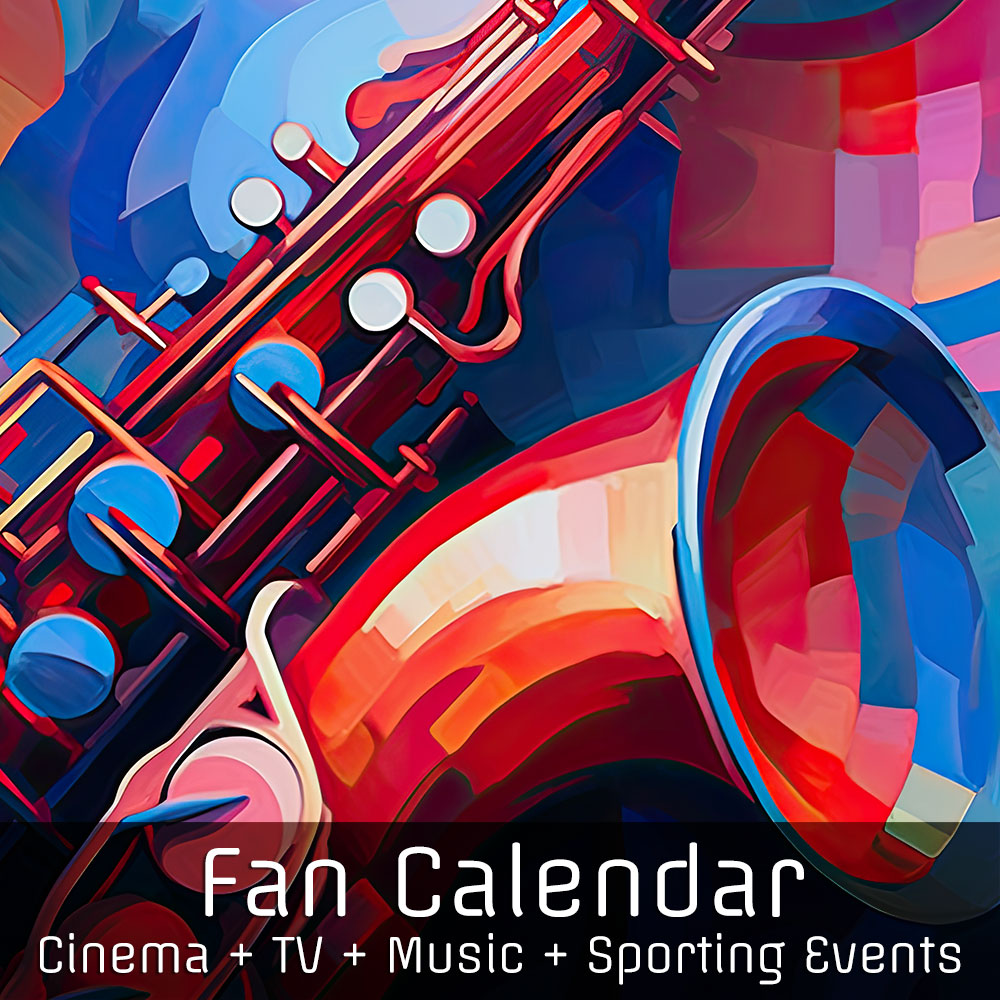

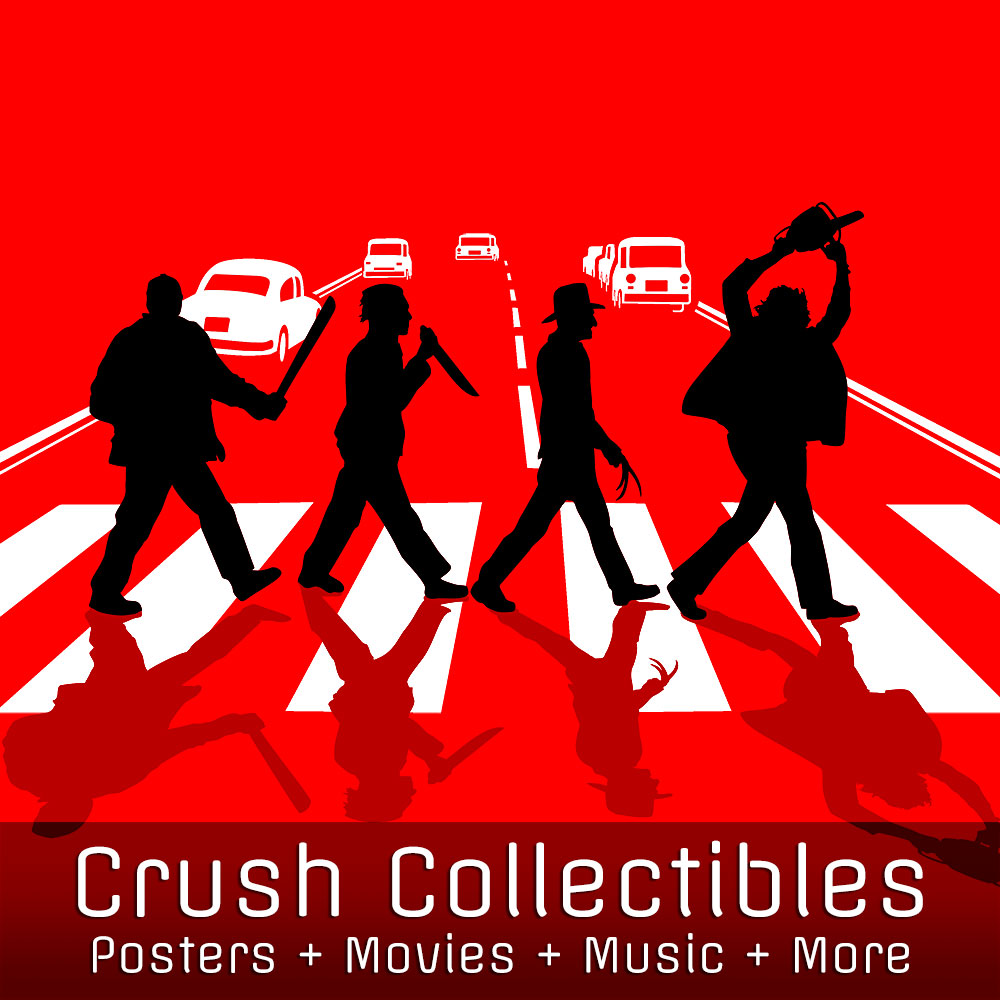


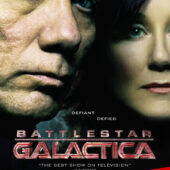
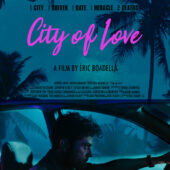
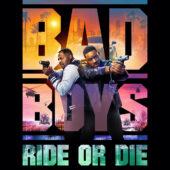
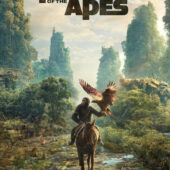





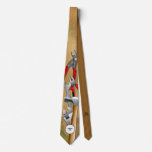
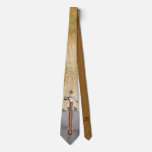


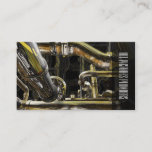

![The Sun Page 3 Girl and Pin-Up Model Debee Ashby Sexy Photo [210906-76]](https://www.filmfetish.com/img/p/2024/04/210906-76-11x85-web-170x170.jpg)
![Globe Burlesque Theatre Atlantic City Photo (September 1958) [220417-8]](https://www.filmfetish.com/img/p/2022/10/220417-8-atlantic-city-boardwalk-11x85-web-170x170.jpg)
![Miss Hawaiian Tropic 2005 Regional Bikini Model Contest Atlantic City, New Jersey Photo [210803-0001]](https://www.filmfetish.com/img/p/2021/08/210803-0001-11x85-web-170x170.jpg)
![Sexy Batman Actress Yvonne Craig Bikini Photo [240304-20]](https://www.filmfetish.com/img/p/2024/04/240304-20-13x19-web-170x170.jpg)







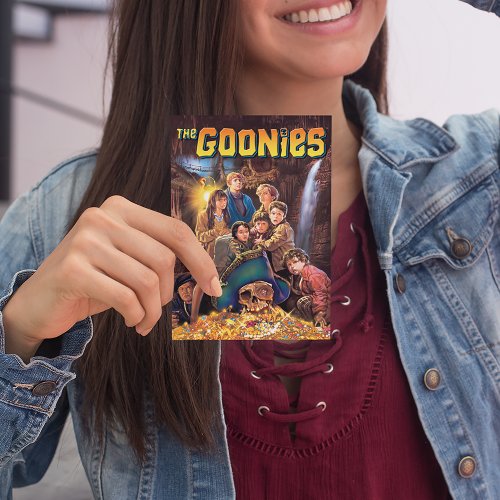
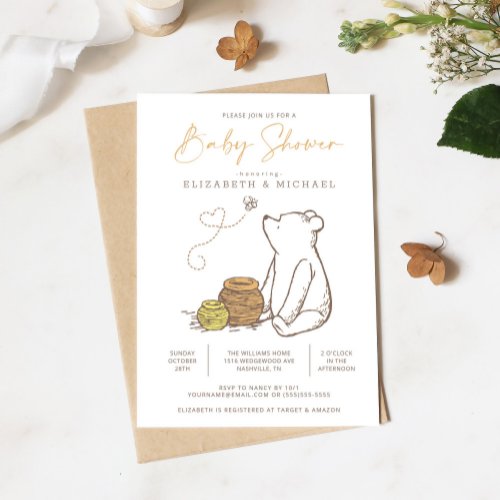
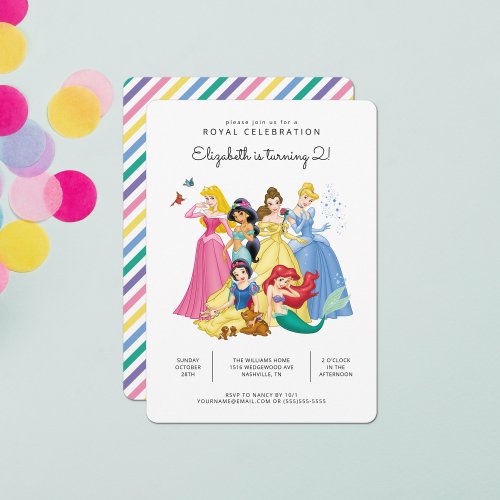
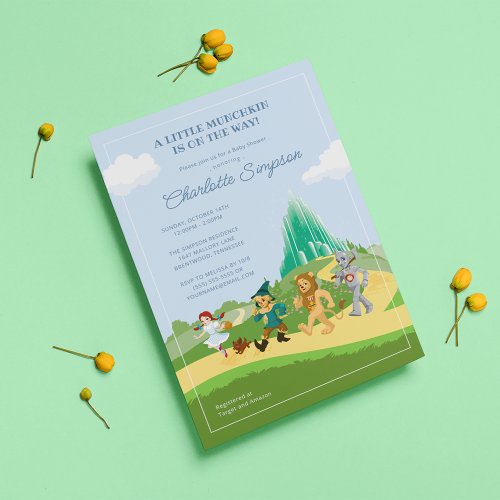
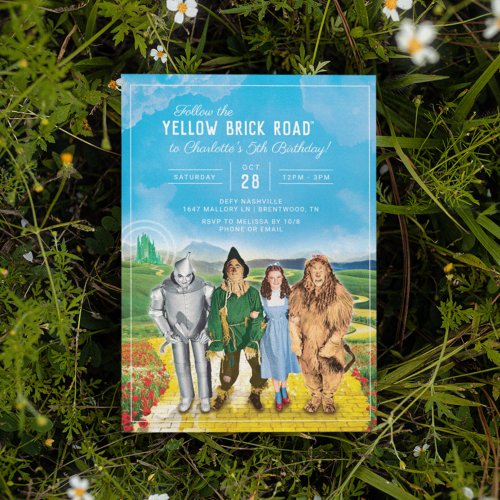
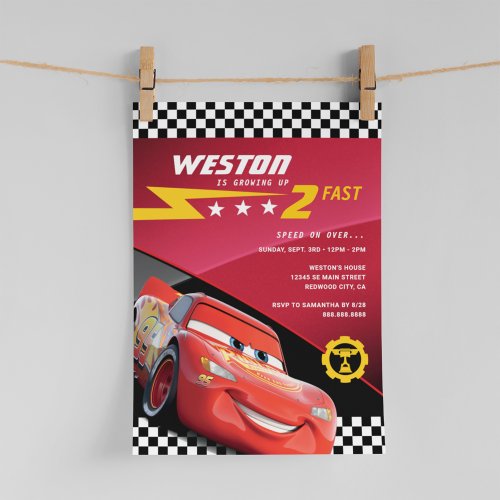


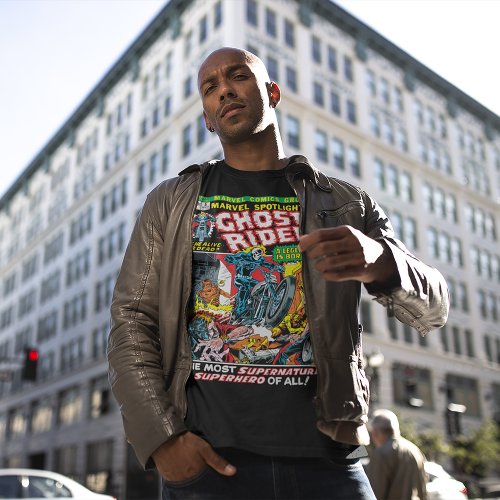


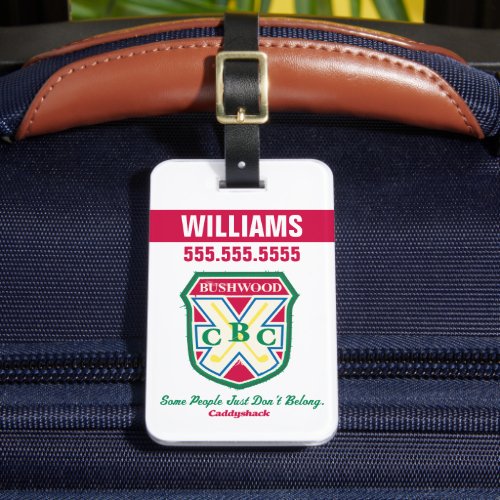
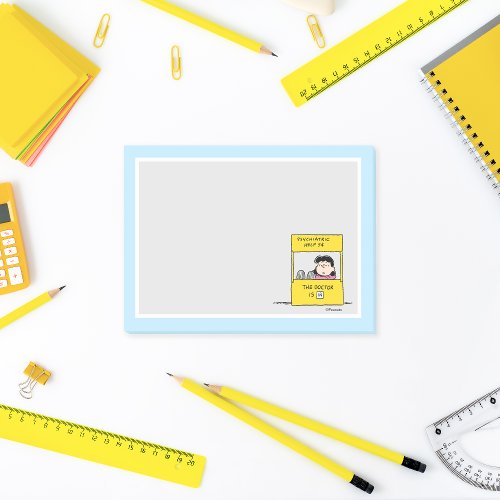
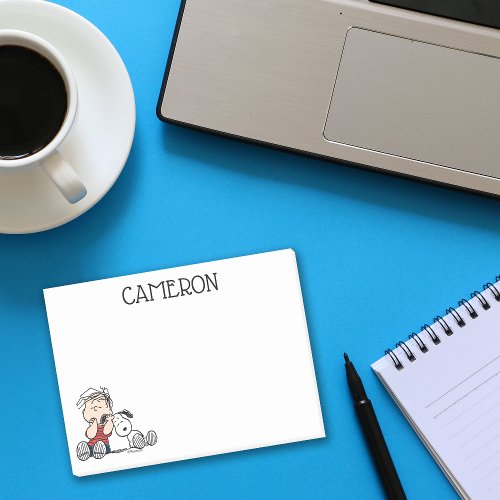

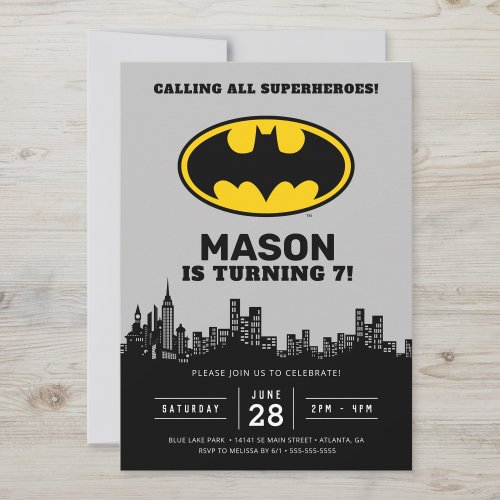
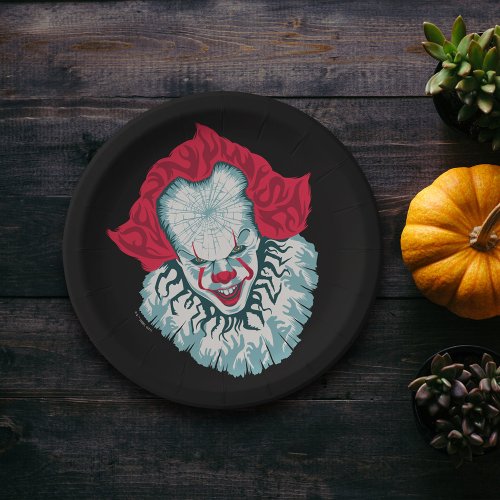
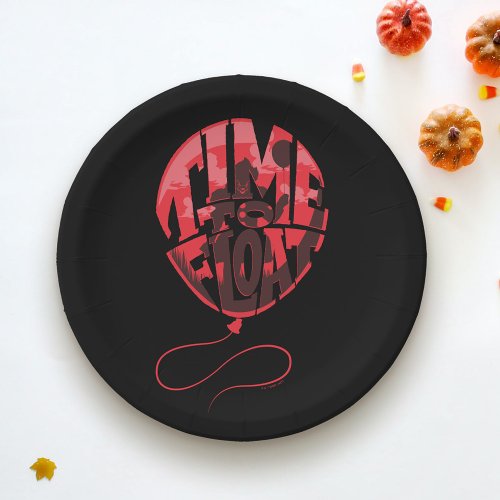
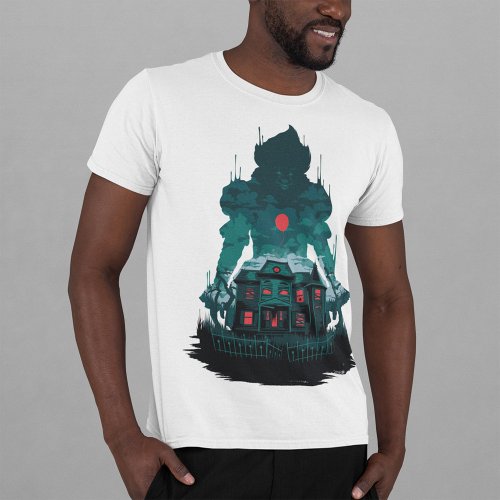

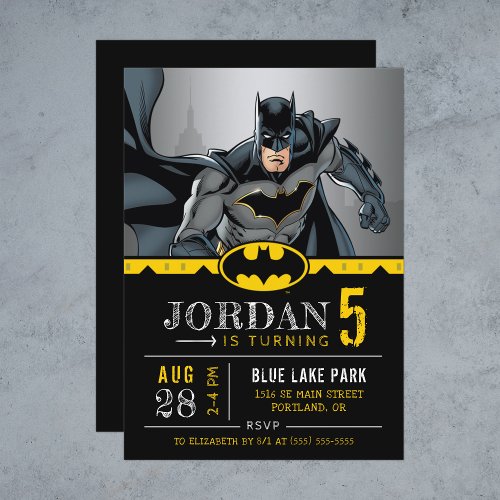
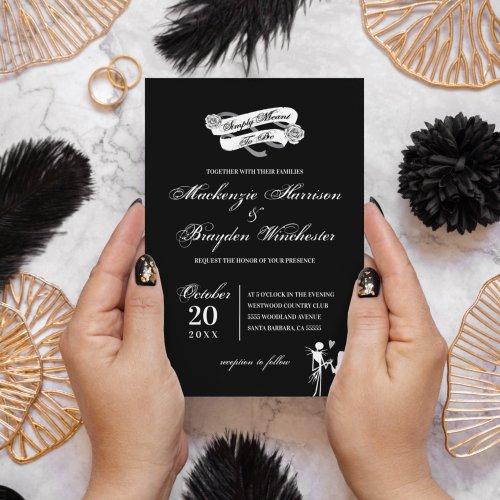

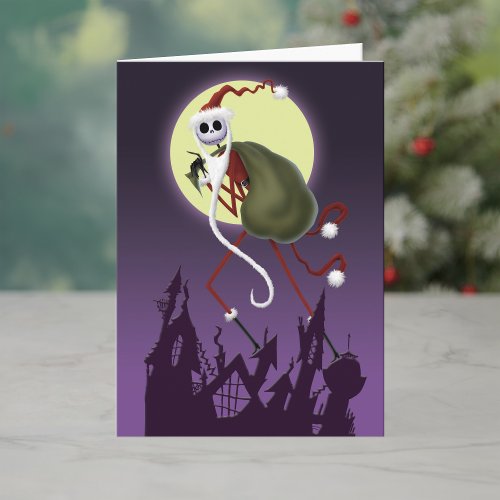

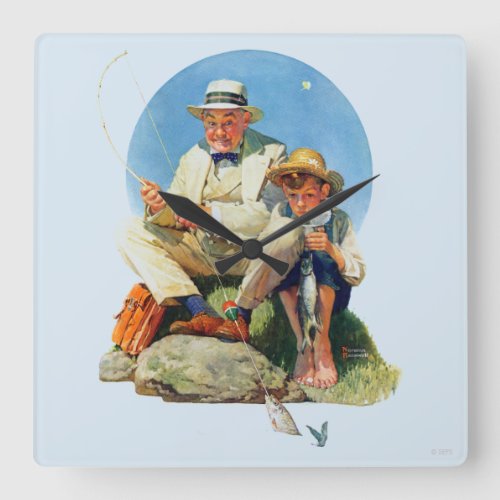
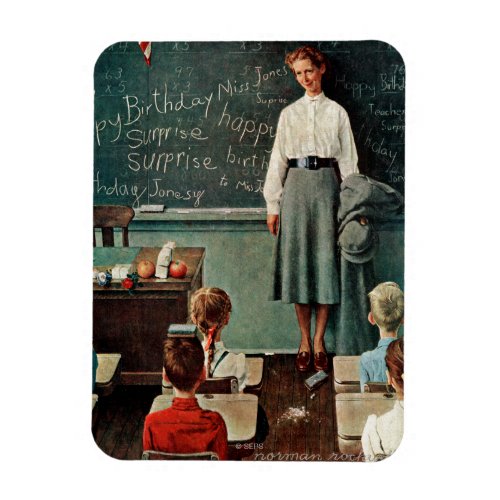
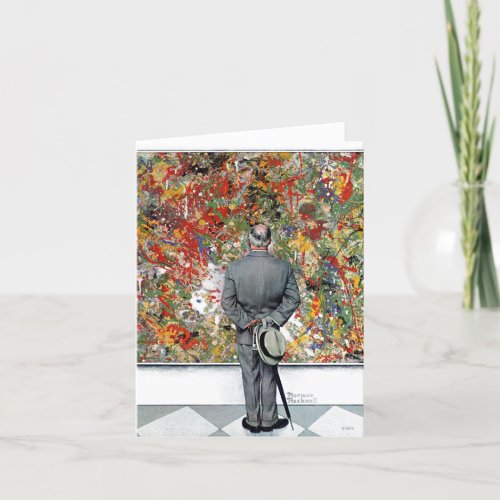
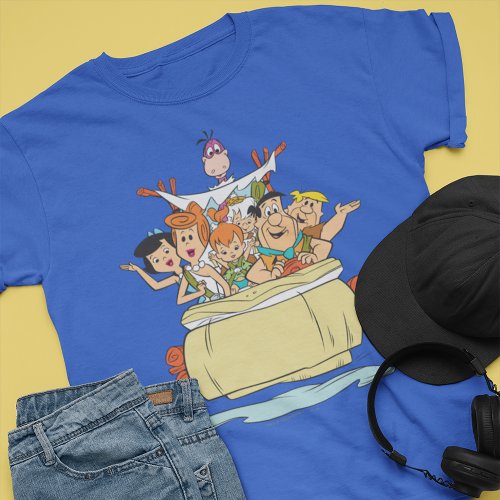



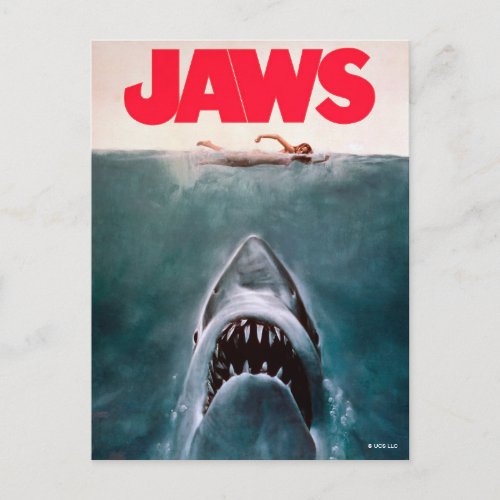

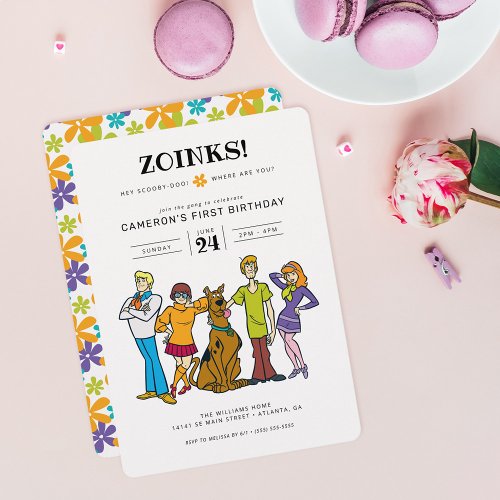
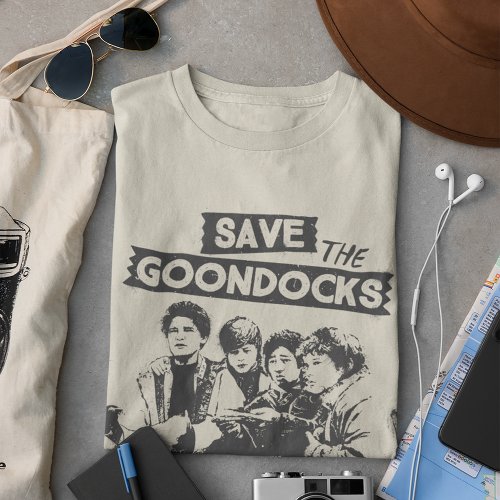

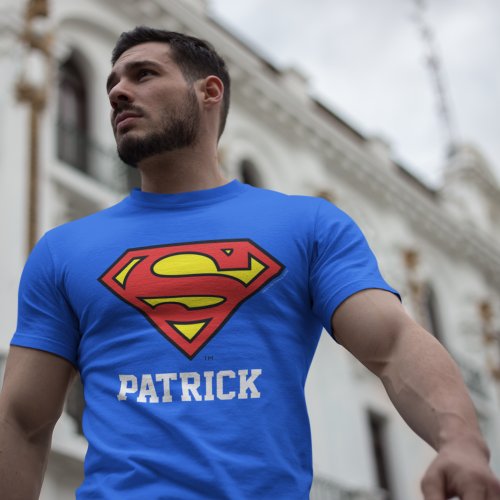
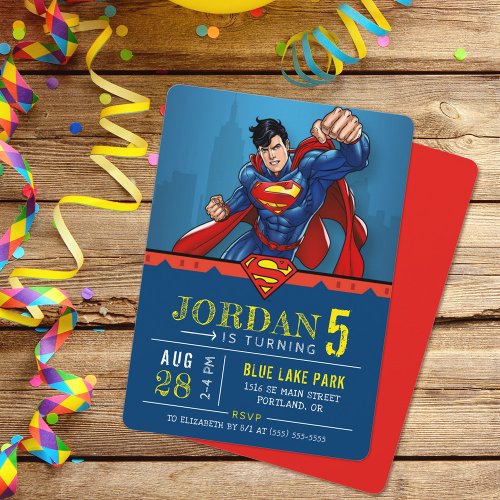

![Film Producer Carl Laemmle Original Press Publicity Photo [F70]](https://www.filmfetish.com/img/p/2021/04/carl-laemmle-f70-01-170x170.jpg)
![The Rembrandt Affair (Gabriel Allon) Hardcover by Daniel Silva [S75]](https://www.filmfetish.com/img/p/2022/12/P1450408--170x170.jpg)

![The Hollywood Reporter (August 22, 2014) Robin Williams [T48]](https://www.filmfetish.com/img/p/2022/04/hollywood-reporter-t48-01-170x170.jpg)

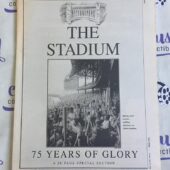
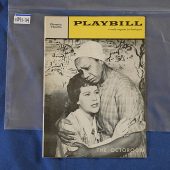
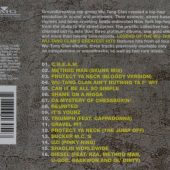
![Adventure: American Promise (1986) Original Press Publicity Photo [M30]](https://www.filmfetish.com/img/p/2023/02/P1490376--170x170.jpg)
